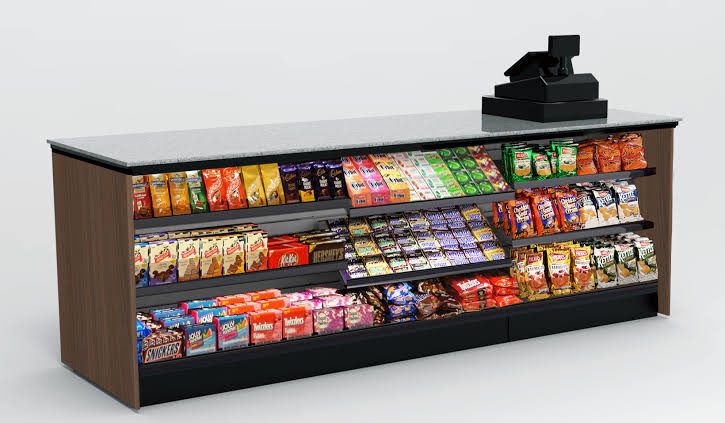For ages, convenience stores have been a go-to in our shopping scene, making it super convenient to snag our daily must-haves. But guess what? These stores have gone through quite a makeover over time. Nowadays, they’re not just spots to grab a quick snack or gas up your ride. Nope, the counters at convenience stores are now key spots that amp up the whole shopping experience and fill in the blanks in today’s retail world.
In this article, we will explore the evolving significance of convenience store counters and their multifunctional role in meeting changing consumer expectations. From embracing technology and offering additional services to serving as click-and-collect hubs, these counters have become crucial elements in the ever-evolving retail landscape. Join us as we delve into the importance of convenience store counter in modern retail and uncover the innovative strategies that are shaping their role.
The Rise of Convenience Stores
Convenience stores have undergone a significant transformation since their modest origins as small, local shops. Initially, they served as compact spaces for quick purchases like sodas or gum. However, with the passage of time, convenience stores have developed into thriving retail centers tailored to accommodate our hectic, fast-paced lifestyles..
Changing Consumer Behavior and Expectations
This shift in consumer behavior has fueled the growth of convenience stores, as they provide a quick and easy solution for our daily needs. From grabbing a morning coffee on the way to work to picking up groceries for dinner, convenience stores have become an integral part of our routines.
The Importance of Counters: Enhancing Customer Experience and Convenience
The Role of Counters as Customer Touchpoints
Counters in convenience stores serve as vital touchpoints between customers and store employees. They are where we make our purchases, ask questions, and seek assistance. Counters play a crucial role in creating a positive customer experience by providing a dedicated space for interactions and transactions.
Designing Counters for Efficient and Personalized Service
A well-designed counter can make a world of difference in convenience stores. From the layout to the signage, every aspect should be carefully considered to ensure efficient and personalized service. Placing commonly purchased items near the counter or providing clear instructions for self-checkout can streamline the shopping process and save precious time for customers.
Multifunctional Counters: Beyond Traditional Transactions
Offering Additional Services at Counters
Counters in convenience stores have evolved beyond their traditional role of facilitating transactions. Many stores now offer additional services at the counter, such as bill payments, money transfers, and even postage services. By providing these extra conveniences, stores cater to a wider range of customer needs and become a one-stop-shop for various tasks.
Counters as Information Hubs and Product Display Spaces
Counters also serve as information hubs and display spaces in convenience stores. They are often adorned with promotional materials, product samples, and menus, enticing customers to explore additional offerings. Moreover, store employees stationed at the counters can provide valuable information, recommendations, and answer queries, enhancing the overall shopping experience.
Leveraging Technology: Innovations at Convenience Store Counters
Self-Checkout and Automated Systems
Technology has revolutionized convenience store counters, introducing self-checkout systems and automated processes. These innovations reduce waiting times, improve accuracy, and give customers more control over their shopping experience. With self-checkout becoming increasingly prevalent, convenience stores are adapting to meet the changing preferences of tech-savvy consumers.
Integration of Digital Signage and Interactive Displays
Digital signage and interactive displays have become popular additions to convenience store counters. These tools engage customers with eye-catching visuals, personalized offers, and interactive experiences. Whether it’s a touch-screen menu or a display showcasing trending products, these technologies create a dynamic and immersive shopping environment.
Bridging the Gap between Online and Offline Retail: Counters as Click-and-Collect Hubs
In today’s fast-paced world, convenience is key. That’s why click-and-collect services have gained immense popularity among consumers. This innovative approach allows shoppers to place their orders online and pick them up at a nearby store, eliminating the need for long waits or inconvenient delivery schedules.
Enter the convenience store counter – the unsung hero of the click-and-collect experience. These humble counters have transformed into centralized hubs where customers can effortlessly collect their online purchases. With dedicated pick-up areas and streamlined processes, convenience store counters have become the missing link between online shopping and offline convenience.
The Role of Counters in the Age of Mobile Payments and Contactless Transactions
Mobile payment solutions, like Apple Pay and Google Pay, have revolutionized the way we complete transactions. And guess who’s there to embrace this transformation? That’s right – the ever-reliable convenience store counter. With their compatible point-of-sale systems, these counters seamlessly accommodate mobile payments, allowing customers to tap and go in a flash.
In a world where hygiene and safety have become paramount concerns, contactless transactions have taken center stage. Convenience store counters have stepped up to the plate by adopting cutting-edge technology, such as NFC-enabled payment terminals. Now, customers can complete their purchases without touching anything other than their own trusted devices, ensuring a hassle-free and germ-free experience.
Conclusion
In summary, the evolution of convenience store counters underscores their transformative role in modern retail, adapting to changing consumer behaviors and technological trends. Originally serving as transactional points, these counters have become essential touchpoints, enhancing customer experience through efficient layouts and personalized services. Beyond traditional functions, they now offer additional services, serve as information hubs, and facilitate click-and-collect services, seamlessly bridging the online and offline shopping experience. Technological innovations, such as self-checkout systems and digital displays, have further elevated their significance, catering to the preferences of tech-savvy consumers. Embracing the era of mobile payments and contactless transactions, convenience store counters ensure hygiene and safety by integrating cutting-edge technologies. Overall, convenience store counters play a pivotal role in the dynamic retail landscape, embodying adaptability and innovation to meet the ever-evolving expectations of today’s consumers.





























